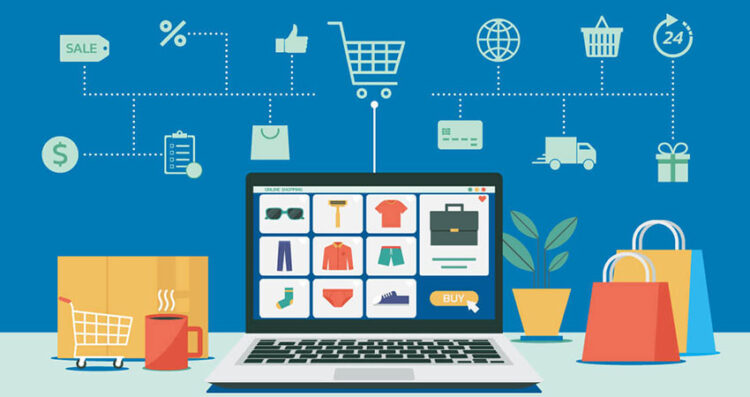In the highly competitive retail landscape, businesses are constantly searching for new and innovative methods of improving their operations, enhance customer experiences, and increase revenue.
One such way is through the adoption of data-driven merchandising, which leverages the power of artificial intelligence (AI) to optimize product placement and assortment. This article will explore the concept of data-driven merchandising, its benefits, and the practical applications of AI in the retail sector.
Page Contents
What Is Data-Driven Merchandising?

Source: analyticsinsight.net
Data-driven merchandising is the process of using data and analytics to make informed decisions about product assortment, inventory management, and store layout. This approach allows retailers to optimize their offerings based on customer preferences, purchase history, and other data points, leading to improved customer experiences and increased revenue.
At the heart of data-driven merchandising is the use of AI, which enables retailers to process vast amounts of data quickly and accurately, uncovering any patterns and trends that may not be apparent to the human eye. AI can also predict future trends and behaviors, allowing retailers to stay ahead of the curve and cater to the ever-changing needs of their customers.
4 Benefits of Data-Driven Merchandising

Source: vendhq.com
1. Personalized Shopping Experiences
By leveraging AI to analyze customer data, retailers can create personalized shopping experiences that cater to individual preferences and needs. This can include tailored product recommendations, targeted marketing campaigns, and personalized promotions. A personalized shopping experience not only drives customer satisfaction and loyalty but also increases the likelihood of repeat purchases.
2. Improved Inventory Management
AI-powered data analysis can help retailers maintain optimal inventory levels by predicting demand and identifying sales trends. This ensures that popular items are always in stock, while less popular items are not overstocked, reducing the risk of excess inventory and potential markdowns. Efficient inventory management leads to reduced costs and increased profitability for retailers.
3. Optimized Store Layout
Analyzing customer behavior data can also help retailers optimize their store layouts, ensuring that high-traffic areas are well-stocked and that complementary products are placed close together. An optimized store layout encourages customers to explore more of the store, leading to increased sales and improved customer experiences.
4. Enhanced Decision-Making
With data-driven merchandising, retailers can make more informed decisions about product assortment, pricing, and promotions. This can lead to increased sales, as well as reduced waste and markdowns. Moreover, AI can identify new opportunities and trends that retailers can capitalize on, keeping them ahead of the competition.
Practical Applications of AI in Data-Driven Merchandising

Source: appventurez.com
AI-Powered Product Recommendations
One of the most prevalent applications of AI for data-driven merchandising is the creation of personalized product recommendations. By analyzing a customer’s purchase history, browsing behavior, and demographic information, AI algorithms can generate tailored product suggestions that are most likely to appeal to the individual shopper.
Dynamic Pricing
AI-powered dynamic pricing models can help retailers optimize pricing strategies by considering factors such as demand, inventory levels, and competitor pricing. This allows retailers to maximize profits while maintaining a competitive edge in the market.
Predictive Analytics for Inventory Management
AI can be used to predict future sales trends, allowing retailers to optimize inventory levels accordingly. For example, through the analysis of historical sales data and factoring in certain variables such as seasonality and promotions, AI algorithms can forecast future demand for specific products and categories. This helps retailers make more informed decisions about inventory management, reducing the risk of stockouts or overstocking.
Virtual Store Assistants

Source: druidai.com
AI-powered virtual store assistants can enhance the shopping experience by providing personalized recommendations, answering customer questions, and guiding shoppers through the store.
These virtual assistants can be integrated into mobile apps or websites, offering 24/7 support to customers both in-store and online. This not only significantly improves the overall customer experience but also helps retailers gather valuable data on customer preferences and behavior.
AI-Enhanced Visual Merchandising
By analyzing customer data and using computer vision technology, AI can help retailers create visually appealing and effective product displays. These AI-driven visual merchandising strategies can be tailored to specific customer segments or store locations, ensuring that the right products are highlighted in the most effective way possible.
Sentiment Analysis for Customer Feedback
Notably, AI-powered sentiment analysis can be used to effectively analyze customer feedback and reviews, helping retailers identify areas of improvement and gauge overall customer satisfaction. This information can be used to make data-driven decisions on product assortment, store layout, and other aspects of the retail experience, ultimately leading to increased customer loyalty and revenue.
The Future of Data-Driven Merchandising

Source: salestechstar.com
As AI technology continually evolves, the potential applications for data-driven merchandising will only increase. In the future, retailers may be able to use AI-powered tools to create fully automated, personalized shopping experiences that adapt in real-time to customers’ preferences and needs.
Retail Automation
It’s hard to miss that one of the most promising aspects of AI in the retail sector is retail automation technologies. Which involves streamlining various aspects of the retail process, from inventory management to customer service, using AI-powered tools and technologies. Retail automation not only increases efficiency but also frees up human resources to focus on more strategic tasks and customer interactions.
AR and IoT
Furthermore, the integration of AI with other emerging technologies, such as augmented reality (AR) and the Internet of Things (IoT), will pave the way for even more innovative retail solutions. For example, smart shelves and IoT-enabled devices can provide retailers with real-time inventory data, allowing for even more accurate demand forecasting and inventory management.
AR can be used to create immersive, interactive shopping experiences, enabling customers to virtually try on products or visualize how items might look in their homes. This can not only improve customer satisfaction but also help reduce return rates and increase sales.
AI-Powered Robotics
AI-powered robotics is another area of retail automation that has the potential to revolutionize the industry. Robots can be used for tasks such as shelf restocking, order picking, and inventory management, significantly reducing labor costs and increasing efficiency in the retail environment.
By combining data-driven merchandising with retail automation, retailers can create a seamless, efficient, and personalized shopping experience that caters to the ever-changing needs of their customers. This will not only lead to increased customer satisfaction and loyalty but also drive growth and success in the highly competitive retail landscape.
AI-Powered Merchandising Placement

Source: multichannelmerchant.com
Data-driven merchandising, powered by AI, is transforming the retail landscape by enabling businesses to make more informed decisions, improve customer experiences, and ultimately increase revenue. Retailers who embrace this technology will be better equipped to adapt to changing market conditions and consumer preferences, ensuring long-term success in a highly competitive industry.





